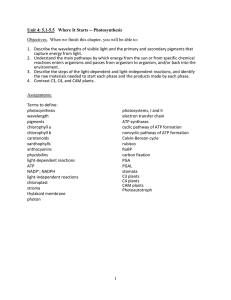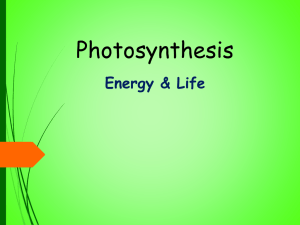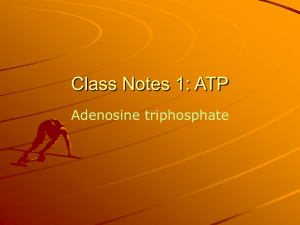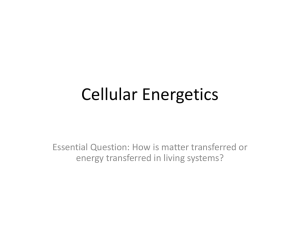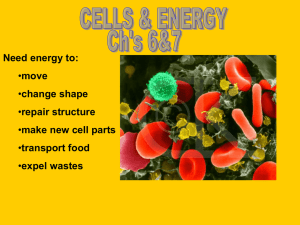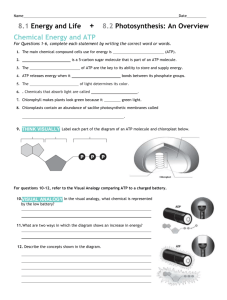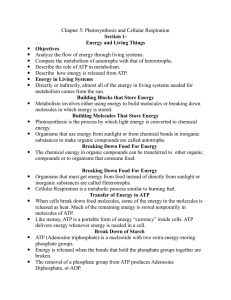Energy and Life: Autotrophs, Heterotrophs, ATP, Photosynthesis
advertisement
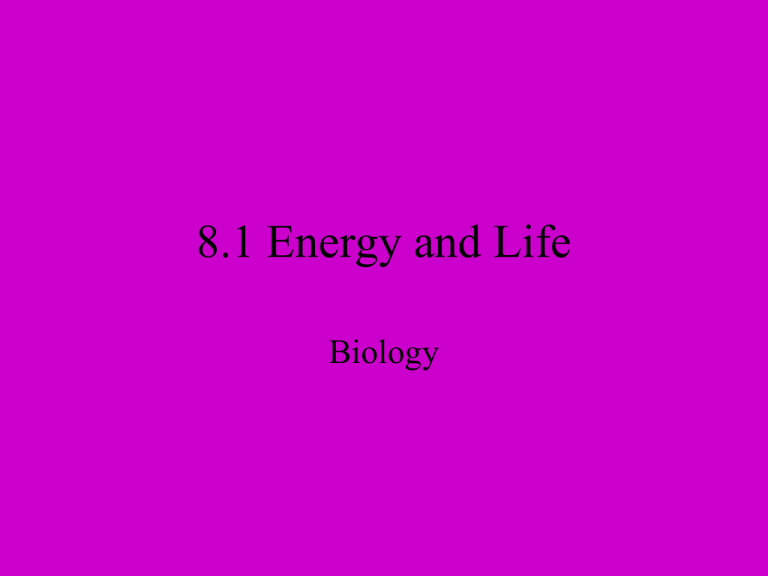
8.1 Energy and Life Biology I. Autotrophs and Heterotrophs • Energy is the ability to do work – Need to use and obtain energy or living things will die • Energy comes from food or sun • Autotrophs – Use light energy to make their own food – Plants, some bacteria • Heterotrophs – Organisms that cannot make their own food – Eat food to get energy – Example: us, leopards, etc – Can also be decomposers • Ex: mushrooms, fungi II. Chemical energy and ATP • Energy has many forms like heat, light, electricity – Also in the form of chemical compounds • To release energy from chemical compounds, bonds are broken that hold the elements together • ATP (adenosine triphosphate) – Cellular energy – Made of adenine (sugar), ribose (sugar), and 3 phosphates Storing energy • ADP (adenosine diphosphate) only 2 phosphates attached – When a cell has energy, it can store it by adding a 3rd phosphate to make ATP Releasing Energy • To release energy in ATP, the last bond that holds the 3rd phosphate is broken – Energy is released III. Using biochemical energy • Uses of ATP – Active transport – Making proteins and nucleic acids – Produce light (firefly) • Cell only keeps a small amount of ATP on hand – Its more efficient – Make more energy by using the food we take in • Cellular energy is created in the mitochondria Photosynthesis Equation • Carbon dioxide + water + light glucose (C6H12O6) + oxygen Light and Pigments • Plants use sun’s energy to go thru photosynthesis • Pigments in plants help to absorb light – Pigment-light absorbing molecule • Main pigment – chlorophyll Lights and Pigments • The color you see is reflected • Chlorophyll reflects green light and absorbs reds and blues very well • Other pigments are present – Xanthophylls (reflect yellow) and carotene (orange)
